- Joined
- Jun 14, 2016
- Messages
- 263
- Reaction score
- 516
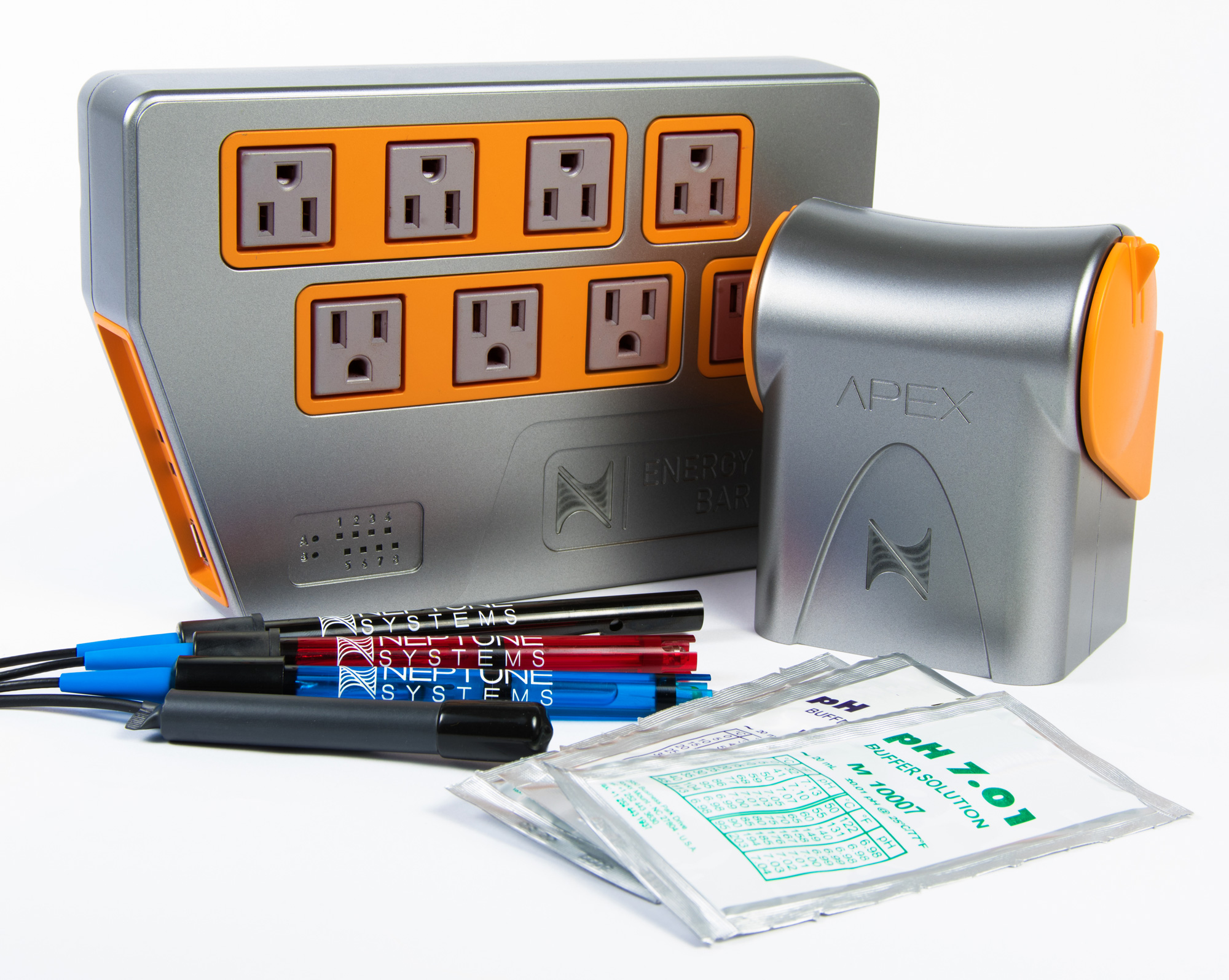
Since then, controller technology has changed, but still remains somewhat rooted in that original design. When Neptune Systems released the Apex, suddenly aquarists had a more reliable controller option, but the nagging annoyance of difficult set-up and programming plagued the devices. Aquarists who needed controller technology couldn’t figure out how it worked and the market became a niche. Back then, all the wires, probes and modules associated with a controller were enough to scare off a seasoned techy. The Apex evolved over the years and the release of Apex Fusion helped simplify controlling and programming, giving the long-standing fan favorite a cloud-controlled environment. As the Apex ecosystem continued evolving, Neptune kept feeding their platform more and more equipment, powerful tools that were made specifically for Apex control. Most have been met with positive reviews and some have a die-hard fan base.
So now, in 2016, the company that refined the controller and has been a market favorite for years has released an entirely new Apex platform. It’s important to note that Neptune hasn’t re-invented the wheel with the next-gen Apex. It’s controlled in much the same way the previous model was. However, they’ve made a controller surprisingly simple to install and get online, and much simpler to program. Gone is the sudden awe factor of opening a new controller’s box for the first time. To replace it, you have sleek packaging and a streamlined design that will have most aquarists up and running in no time.
Listening to their users:
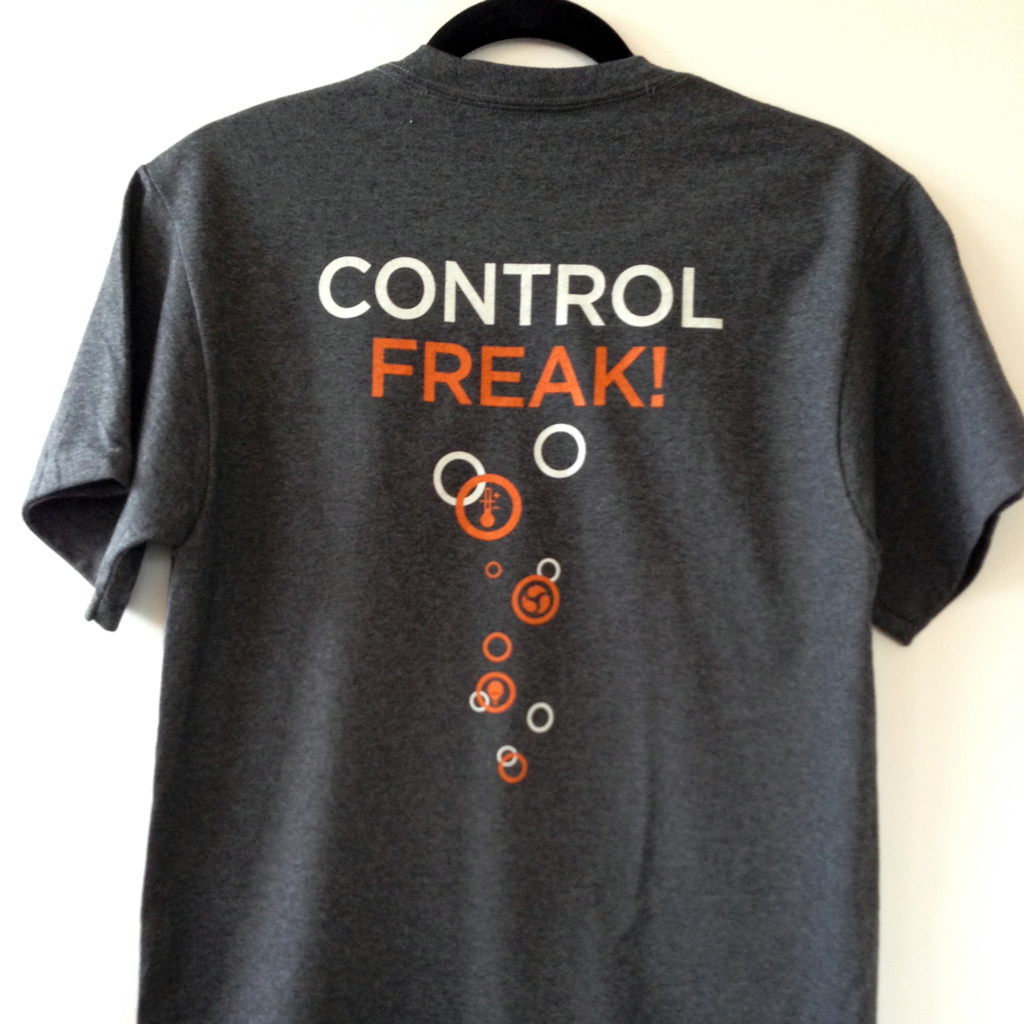
By far, one of the largest complaints about the previous Apex was that it required a hardline network connection to function. Some aquarists didn’t have a router anywhere near their tank, while others ended up running super-long network cables across the room just to make the connection. While the requirement for a hard wired router connection was rooted in stability, it ended up being a disqualifying factor for many controller hungry aquarists. Luckily with the next-gen Apex, the need for a hard line connection is gone, once and for all. Setting the controller up online was painless and honestly much easier than the bevy of other “smart” products I’ve installed over the years. Once connected to power, the Apex generates its own network, accessible in the wi-fi settings of any mobile device or computer. After connecting to it, you set the Apex up by choosing the wireless network you wish for it to operate on. After that, you’re online and ready to communicate with Apex Fusion. It took less than 3 minutes to have the controller online and sending readings to the Fusion dashboard. In order to maintain their reputation for ironclad reliability, Neptune included an on-board network port, meaning that you can attach your Apex directly to a router. It’s well noted that hard-lined connections are more reliable, as the controller will still function online, even if Fusion’s cloud service were to go down. It’s there if you want it, but not mandatory.
Streamlined:
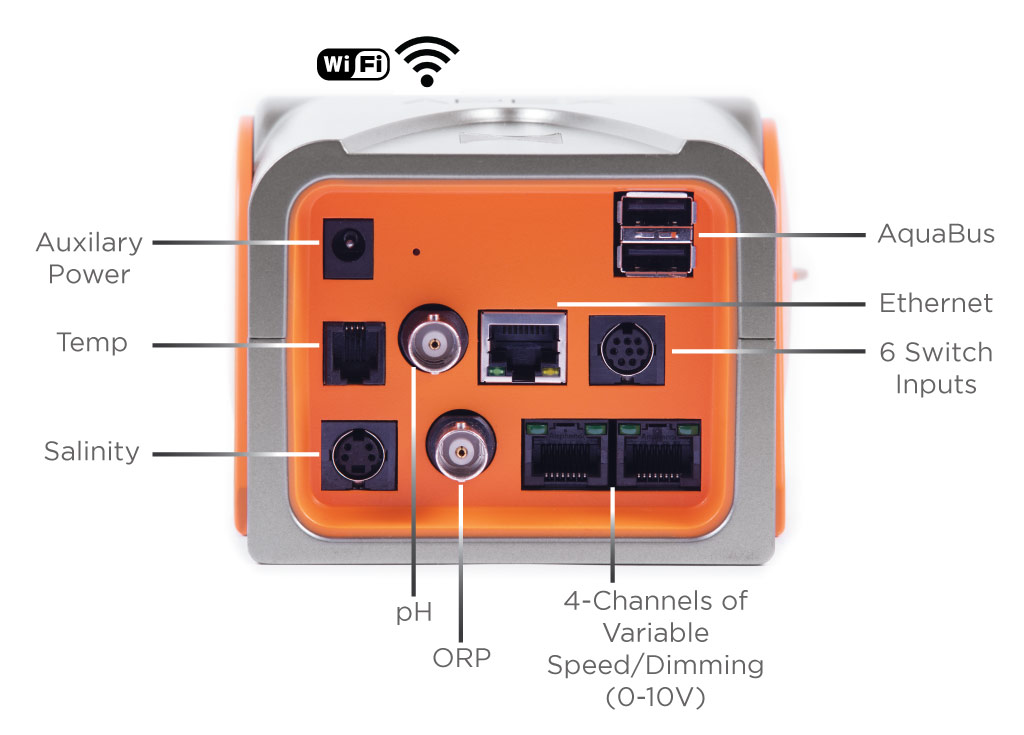
When you pull the new power bar 832 out of the box, you will immediately notice that Neptune has streamlined the design of this device. Instead of getting slammed with a bevy of modules and wires, the only things to hook-up are four probes (temperature, ph, ORP and conductivity sensors). Neptune has consolidated modules into one nifty device which mounts somewhere around the tank, and flips up to connect accessories and down to prevent infiltration from saltwater.
The power bar 832 is a large upgrade from the previous unit. In many ways, the power bar is the heartbeat of the controller and the 832 comes with 3 1-Link ports (used to connect WAV circulation pumps or the DOS dosing system) along with several other connectors and aqua bus outlets (it’s worth noting that Aqua Bus is not standard USB and standard USB is not compatible with Apex). Aqua bus connections allow aquarists to add additional modules, power bars, etc. Even the way the 832 mounts to the tank is nifty, using a small bracket that can be attached first (without the need for measuring or templates), with the power bar sliding over top, clipping in place and remaining fixed to the bracket.
Also, Neptune is streamlining probe and monitoring options with the new Apex. Instead of aquarists having options for less-than-lab-ph-grade probes, the new Apex ships with the lab grade ph probe, as well as an ORP, conductivity and temperature probe. Out of the box, the Apex has the monitoring capability to satisfy even advanced aquarists most immediate needs. In fact; ph, ORP, temperature and conductivity (salinity) are the most advanced water chemistry monitoring values on controllers today. Until there is a major technological breakthrough that consolidates cost and ease of use, it’s likely to stay that way across the board.
No display?
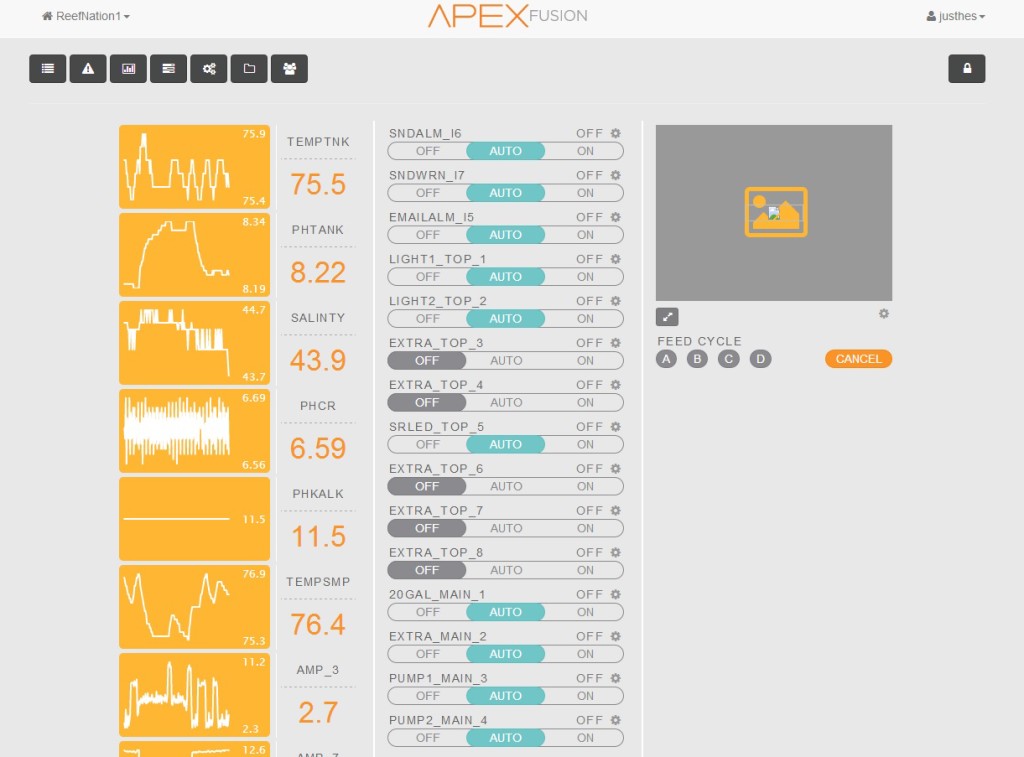
Neptune decided not to develop and ship the new Apex with any display. According to the company, the R&D cost of a controller only display compiled with the retail cost to manufacture it, would raise the price of the new Apex too much. With the Apex Fusion operating system, aquarists can easily sync the controller with an iPad, iPhone, computer or any web capable display.
The new Apex is also backward compatible with all of Neptune’s other displays. If you want at a glance monitoring of water chemistry, or need to manually program the controller, hooking up a previous display makes that possible. Neptune is still manufacturing and selling their previous displays, so aquarists without one can easily order it online.
Backward compatibility:
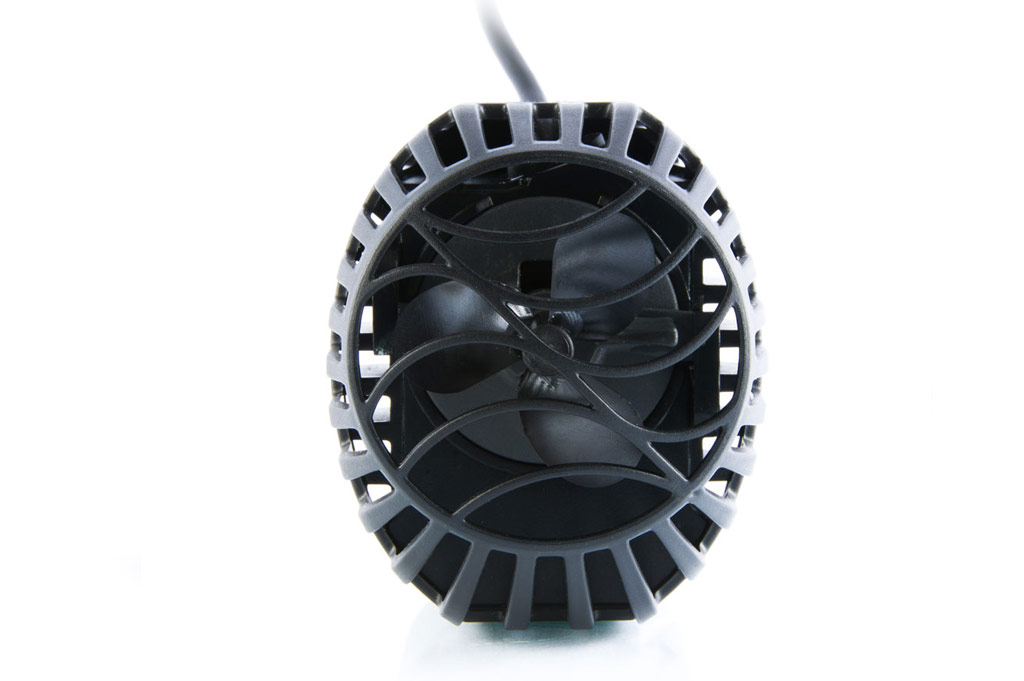
Most of Apex’s previous add-ons work seamlessly with the new system. I was able to easily attach the advanced sensor module (ASM) and have my PAR meter up and running in no time. Also, devices like the WAV or DOS are far more streamlined, since they connect directly to the power bar 832, without the need for a separate module and power supply. This makes for a much cleaner installation and those of us who like to play around with uniquely constructed Apex mounts will have a field day with the new system. I was surprised how easily I could create an organized, aesthetically pleasing mount, largely due to the absence of 1-Link modules and their associated power supplies. Since there are so many connections on the power bar 832 and connection hub, Neptune can greatly reduce the need for power-bricks if aquarists use their proprietary equipment. Power bricks are notorisouly hard to mount up and away from saltwater. Conductivity and ORP probes connect directly to the new hub, so there is no need for additional modules just for probes.
My WAV circulation pumps streamlined seamlessly onto the new Apex, and I was able to shed an additional power supply and module since the new controller offers direct connection.
New Features:
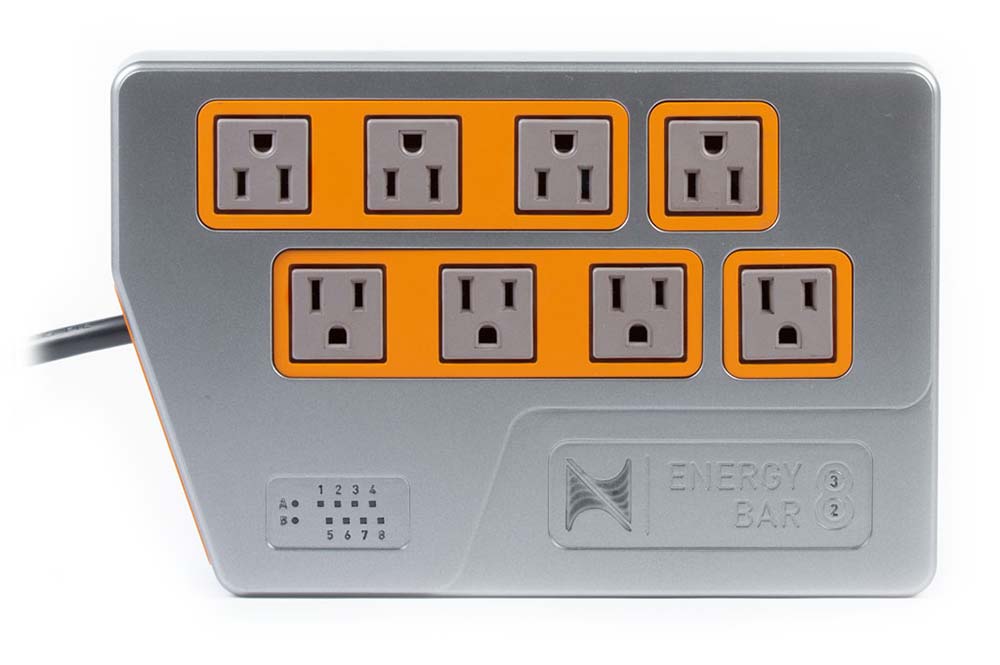
If aquarists were expecting the new Apex to have a breakthrough feature, they may be disappointed. In many ways, the new Apex is very similar to the previous generation and the feel of using it via Fusion is exactly the same. For those of us that are comfortable with the Fusion interface, this is a good thing, because we’ll be right at home using the new Apex. However, if an aquarist is looking for a groundbreaking new feature (such as a nitrate probe, or enhanced water chemistry monitoring) it isn’t there yet. The reality is though, monitoring nitrate, calcium and carbonate hardness reliably and consistently is no small task for any controller and the difficulties in using probes designed for enhanced water chemistry monitoring have prevented many controller companies from pursuing those options. Cost is also a factor, when we consider that a stand-alone nitrate probe itself is $ 300 or more.
What Neptune has done, is built upon their Apex platform and listened to their community of users. The power bar 832 has front-panel, live LED monitoring of active power outlets. With this, aquarists can quickly look at the power bar and determine what is getting power and what isn’t. The LED light blinks for devices that are working under active programming, such as an auto-top off or heater.
The most notable new feature (and one that is likely to grow a host of uses) is power monitoring. Each outlet on the power bar 832 is constantly monitored for power consumption. In Fusion, you can easily graph and view your system’s overall power consumption, but also view each connected devices individual consumption. The power data is displayed in several ways, from AMPS to k/WH (kilowatt hours, a common unit of measurement in calculating energy cost). It even calculates an estimated cost of what the user is paying per hour, day, week, month, year to run any device connected to the power bar 832. It’s a powerful tool not only for determining what equipment is efficient, but also for determining if something isn’t working right.
Often, if a piece of equipment is failing, or a maintenance issue has come up, the power consumption of the device will change. The Apex determines and records a base-line power consumption for each device connected to the new power bar and aquarists can easily determine if that’s outside of “normal” performance, by looking for unusual increases in power consumption. If a change in power consumption is noted, the device can be serviced or replaced. Since most aquarium devices (with the exception of smart devices, such as Ecotech Vortech or Vectra pumps) don’t work like computer accessories (which communicate with the computer and relay their operating status) power monitoring is a good way for the Apex to give the aquarist feedback on the state of everything being powered.
I’ve already gotten a taste of how well this works. I use the Theiling Roller Mat on my tank, which is an automated mechanical filtration system. The roller mat works by passing water over a drum covered by filter fleece. When the filter fleece becomes clogged by debris and water flow is obstructed, the water level rises, triggering a float switch that rolls the fleece and provides new, clean filter media. The water level drops until the fleece is debris laden again. On my Apex Fusion dashboard, power consumption for this unit barely registers, except for in very short bursts throughout the day. Several days ago, while at work, I was checking the status of my tank. I could see the roller mat’s power consumption had risen and was staying at operating consumption constantly. I switched it off in Apex Fusion. When I got home, sure enough debris and calcification had stuck the float switch in the tripped positon, so the roller mat was just churning away.
It will be interesting to see how aquarists implement power monitoring to both save money and provide feedback about device performance. It will also be interesting to see if device manufacturers provide more accurate information regarding power consumption when marketing products. It’s not uncommon to have a device advertise a certain watt consumption, but in fact use far more electricity, as drivers and power bricks weren’t factored into to overall consumption.
Wireless set-up and connection issues?
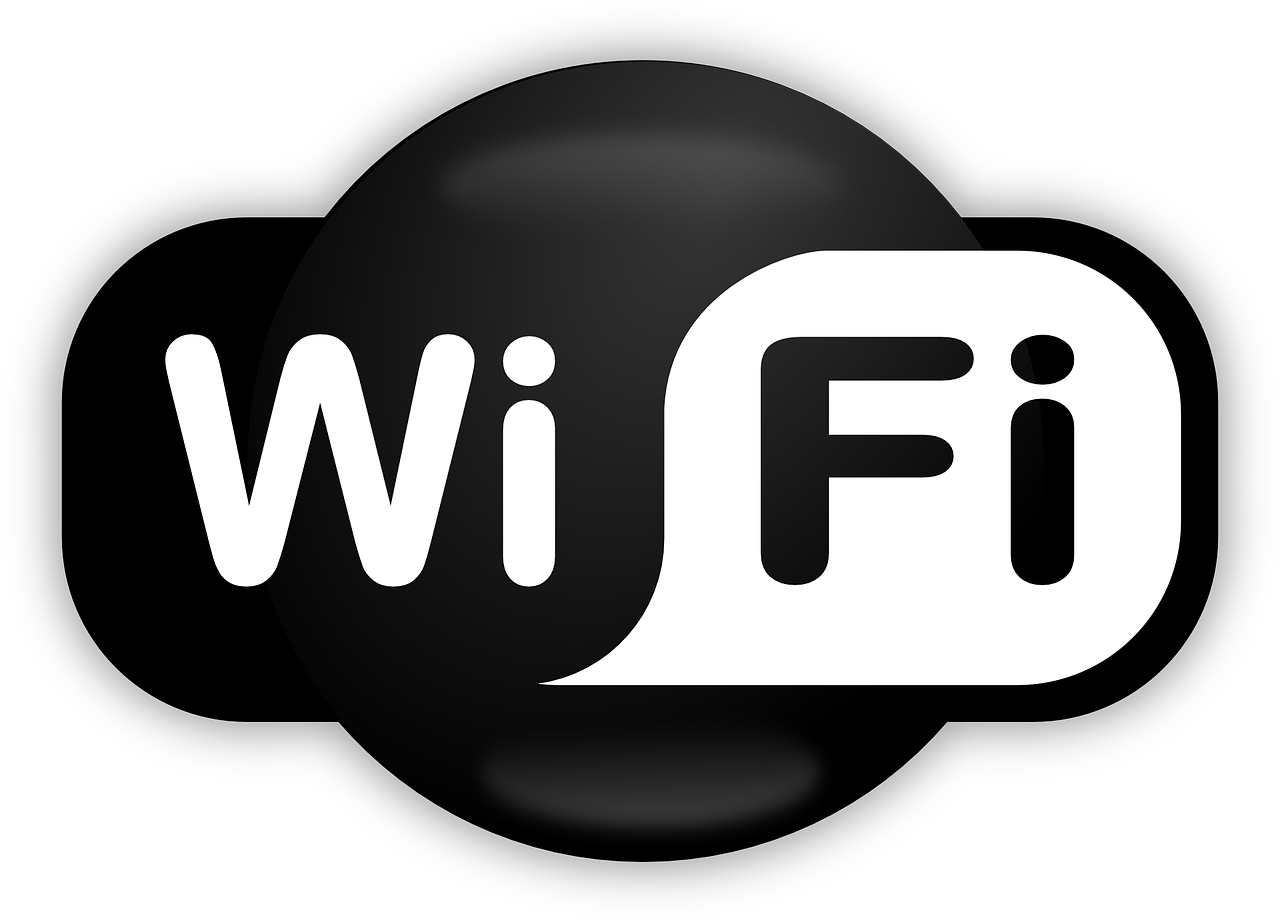
I’ve read some complaints coming from aquarists, claiming that their new Apex is disconnecting from Fusion numerous times over the course of 24 hours. For the first week of ownership, I had my new Apex running entirely connected to the internet wirelessly, without a single Fusion disconnect. However, for redundant reliability, I went ahead and ran a network cable from my Apex’s networking port, to the router. Over the years, I’ve found this to be the best way to prevent disconnects from my local network and Apex Fusion. I would recommend a hardline connection for any aquarist capable of having one.
It’s important to note that the performance of your internet connection and wireless network will directly influence the performance of your Apex (or any internet connected controller for that matter). Shoddy router performance, weak signals, firewall software and on-board router security can all lead to disconnects or connection failures. I’ve also found that often internet service provider (ISP) installed router/modem combo units provide poor performance for aquarium controllers and other smart products. Many people try to work around this by installing another router on top of the ISP installed combo unit. Often, this doesn’t fix anything and the ISP installed router/modem must be configured to simply act as an access bridge to the new router.
It’s my personal opinion (and practice) that it’s advantageous for aquarists to purchase a high-end, third-party modem that is supported by their ISP. Often ISP’s provide a list of modem hardware they support. Often, you can find modems on the market with features not available on ISP provided units and often these third party modems function well with smart devices (like an aquarium controller). I’ve had particularly good luck with the Motorola Surf Board line of modems.
Also note that Apple airport routers create one network, which is then broadcast over two channels (2.4 ghz and 5 ghz). Five ghz channels are what is often advertised as an AC network channel, and provide faster speeds than 2.4 ghz but limited range. Most aquarium controllers (all I think) and smart home products only connect to 2.4 ghz channels. If you find you’re having an odd connection issue between the device you’re using to set-up your controller and your router, it’s possible there is an issue with the network channel you’re connected to. A good option for Apple airport users is to enter the router settings, and have the airport broadcast the 2.4 and 5 ghz channels separately. You can then force the device you’re using to connect to the 2.4 ghz channel, which may solve the connection related issue. I learned this quick fix when installing a Bloomsky smart weather monitor, as having a smart phone and the device on the same network channel was the only way to get it to connect.
Most Linksys, Net Gear, Asus, Google and other popular router brands automatically broadcast 2.4 ghz and 5 ghz networks separately.
Final thoughts:

The new Apex brings the ecosystem into the 21st century without any major eye popping feature explosions, but with stability and compatibility with the accessories aquarists have spent years (and thousands of dollars) utilizing. Neptune has greatly eased the set-up and programming burden that bothered so many users of early Apex systems and replaced bulky modules and independent power supplies with a sleek, minimal connection center which rotates down to protect from water splashes. The bright orange glowing N on the front of the power bar and connection center is a nice touch, and helps make your aquarium appear like a high-tech device. Quite frankly, it looks really expensive.
Without a doubt, almost everyone that sees my tank is curious as to what this slick looking system mounted at the front of the stand is, and interested in just what it does. While at face-value the power monitoring feature doesn’t seem like a major advancement, it in fact opens the door to a whole host of potential, giving the Apex the ability to monitor equipment on a deeper level and further prevent catastrophic tank failures. It will also be invaluable in helping aquarist weed out dated equipment and determine what gear is the most efficient and cost effective long term.
I’ve used an Apex since the first unit debuted years ago and the controller platform has saved my aquarium from destruction many, many times. Whether it was a sticking heater, a faulty ozone generator or an over-flowing skimmer – the Apex always came through, shutting down the culprit before it did any damage. Years ago I told a group of aquarists I was speaking for, that if I could only have one piece of equipment for my tank it would be the Neptune Systems Apex. After spending some time with the new system, I can see that hasn’t changed.


















